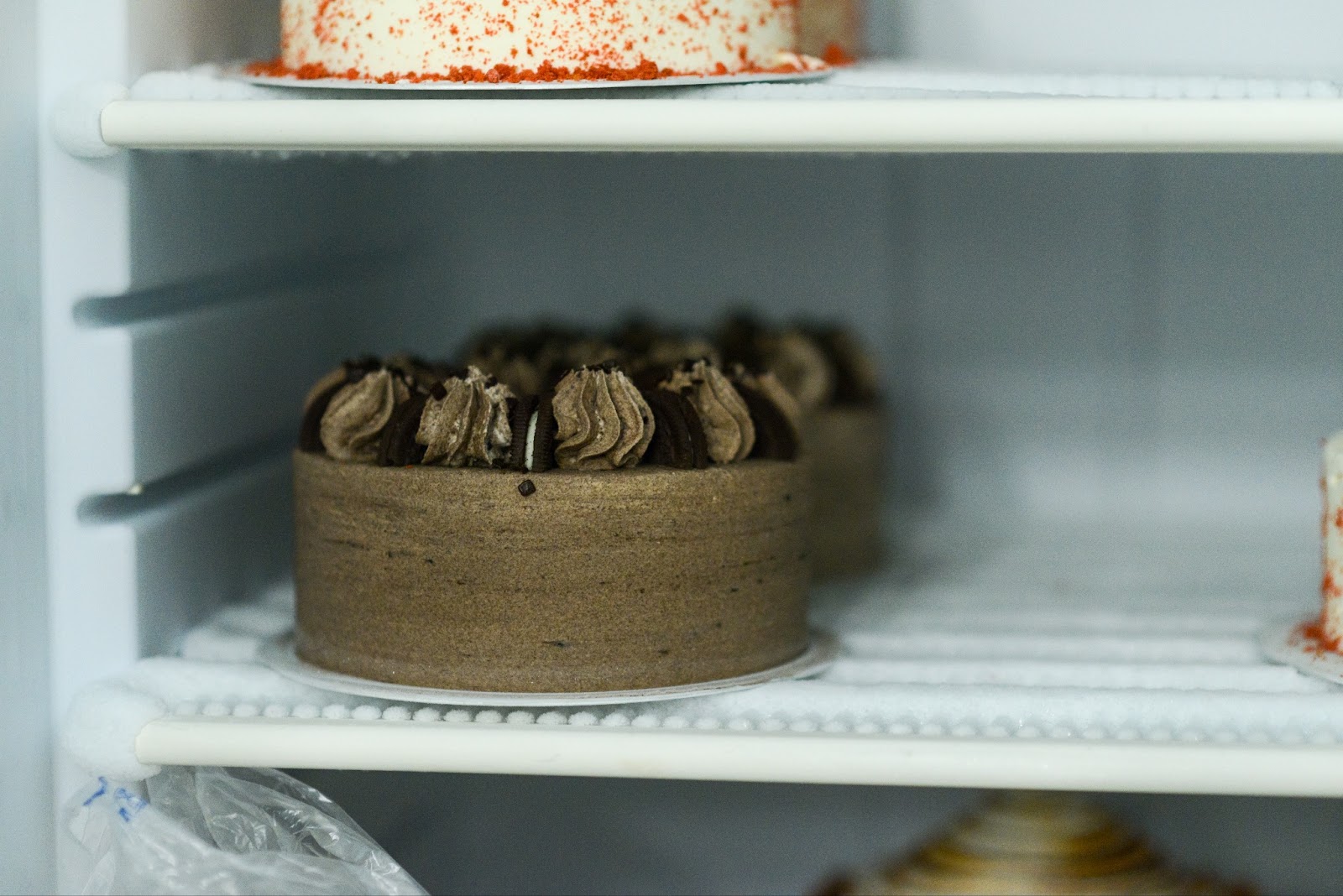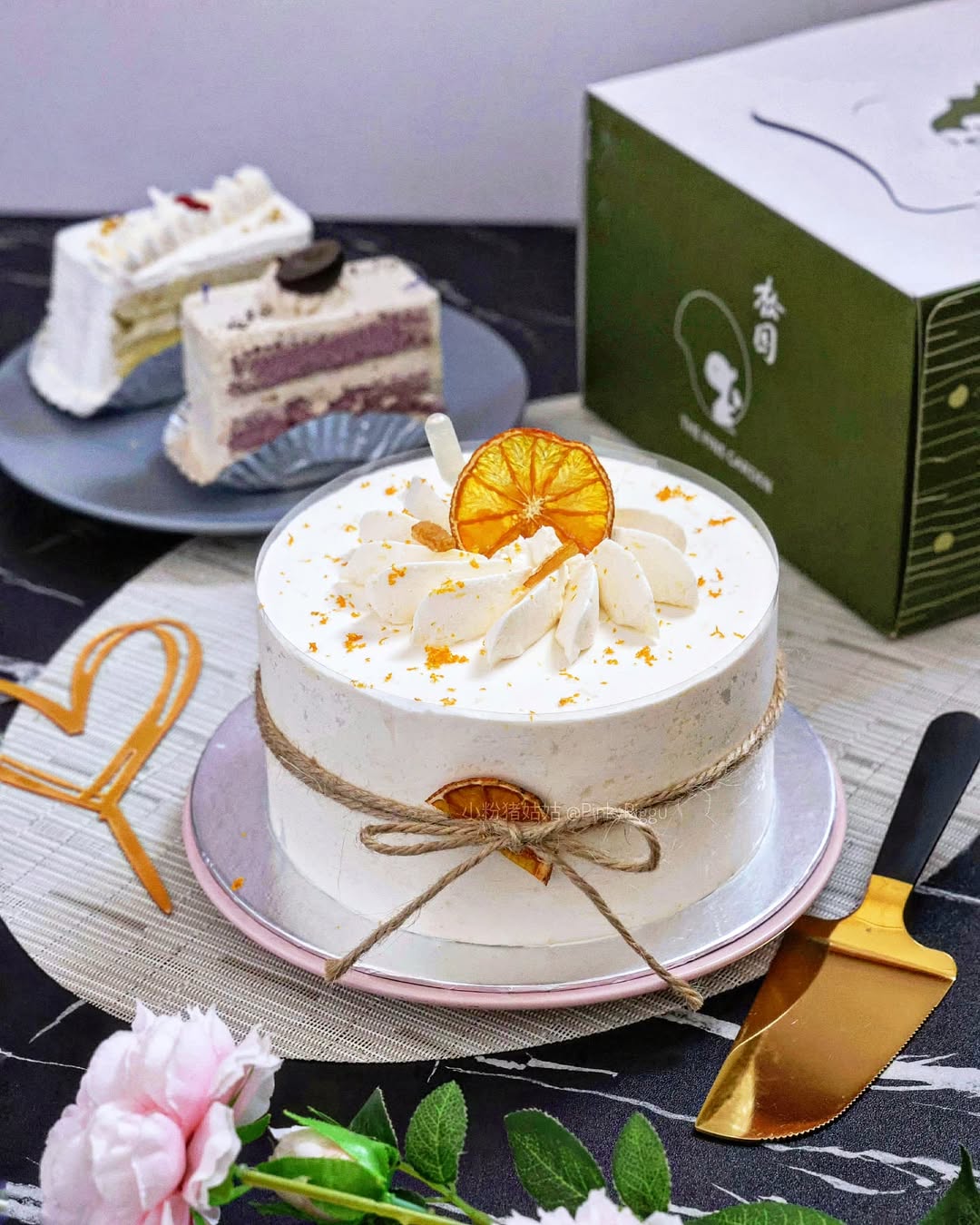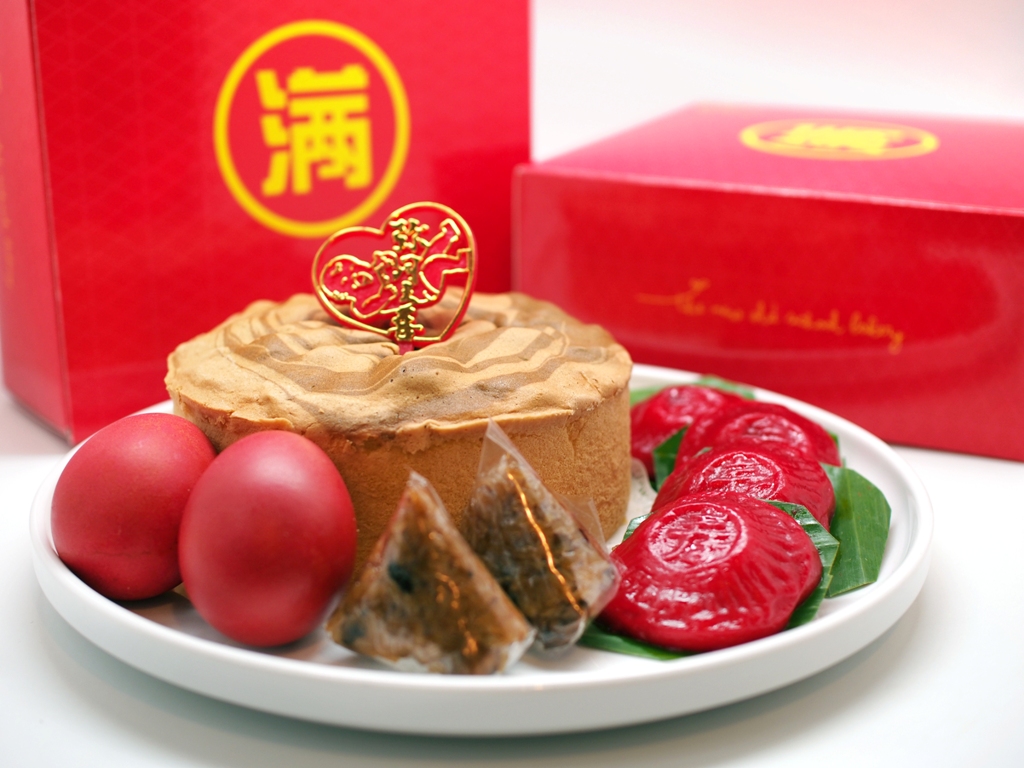Cakes are universally loved. They are the “epitome of desserts” for many people, and it’s super common to have some cake stored up. With that said, you might be wondering how long a cake lasts. Or better yet, is there actually a better way to store cake?
So, How Long Does a Cake Last in the Fridge?
It really depends on the cake and how it’s stored. Generally, a cake can last up to a week . This may vary based on the ingredients used, and whether it’s frosted or unfrosted. Cakes with fresh cream, whipped cream or cream cheese frosting usually have a shorter shelf life (2-3 days max).
On the other hand, buttercream or fondant-covered cakes can last up to 5 days if stored properly. Unfrosted sponge cakes tend to hold up better and can last around a week. But remember, your fridge plays a big role too.
A stable fridge temperature (usually around 4 degrees) helps slow down bacterial growth and food spoilage. If you’ve got a homemade cake, it might not last as long as store-bought cake, especially if it doesn’t contain preservatives.
Watch out for any changes in cake smell, texture or the appearance of mould growth.
How to Store Cake the Right Way
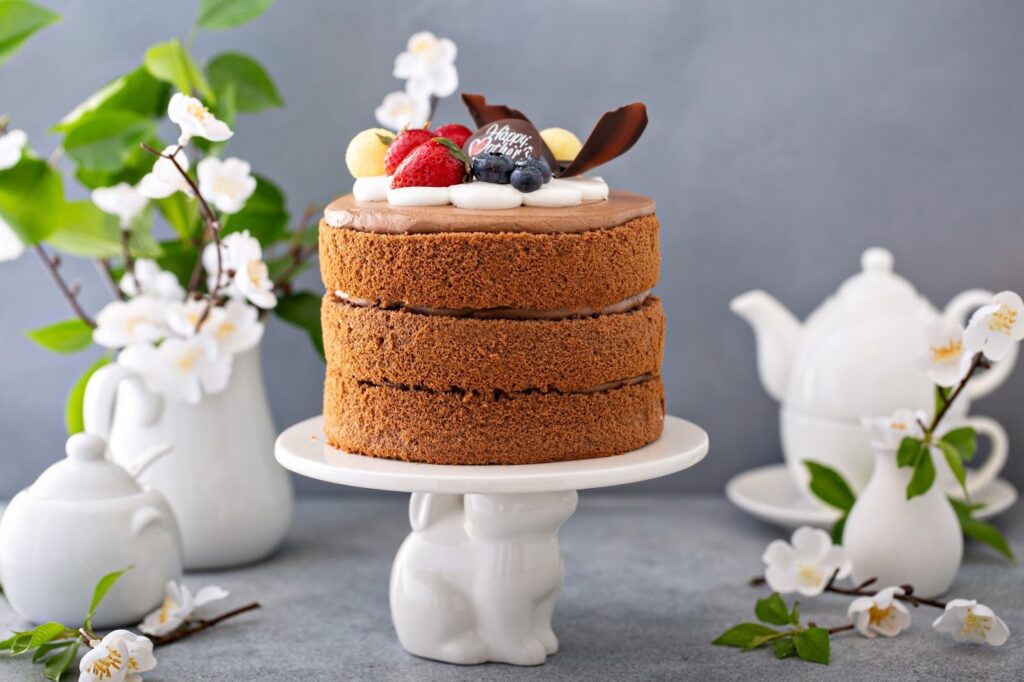
1. Cool Your Cake Before Storing It
Make sure your cake is completely cooled before storing it. Cakes that are still hot will continue to cook, drying out faster than normal. To cool your cake, set it on a rack to allow air circulation on all sides.
If it’s homemade, avoid leaving it in the cake tin. This can cause trapped heat, making the bottom soggy and your cake might fall apart before you can store it away! Let it cool for an hour or so before moving on to the next step.
2. Wrap It Well
Most people don’t really think about wrapping their cake before storing it. However, this pro tip is key to preserving cake moisture and preventing fridge odours. Use plastic wrap or aluminium foil to cover the whole cake.
Or you can add a plastic wrap first before adding a layer of aluminium foil for extra protection. If you’ve already sliced the cake, wrap each individual slice before storing.
This not only makes it easy to grab a serving but also keeps the rest of the cake from drying out.
3. Choose the Right Cake Container
Choosing the right container is one of the most important steps on this list. It adds an extra layer of protection to the wrapping, preserving the cake longer. We highly recommended using an airtight container to keep the cake moist.
While leaving it in the cake box could work too, it’s not the best long-term choice. These boxes aren’t airtight, and your cake will be exposed to fridge smells. When all else fails, a large tupperware or even a deep glass dish with a lid can do the trick.
4. Cut the Cake Into Slices (Optional)
Cutting a whole cake into slices may be a hassle, which is ironic considering the fact that we only eat sliced cake. Nonetheless, smaller cut cakes are much easier to preserve. It will take longer for them to dry out, especially if you wrap them.
The best part of keeping sliced cake is how easily you can grab a piece whenever you want one. Plus, if you’re freezing cake, sliced portions thaw more evenly and quickly than whole cakes
5. Room Temperature, Refrigerator or Freezer?
Not all cakes need refrigeration, especially if you plan to finish it sooner than later. Room temperature storage can be just as good for cakes like plain sponge, butter cakes or those with fondant or ganache. Basically those with perishable ingredients.
Just be sure to keep it in a cool and dry place, away from direct sunlight or heat. Freezer storage on the other hand, is great if you want to keep your cake for months on end. When wrapped and stored properly, most cakes can stay fresh for up to 2 to 3 months.
When ready to eat, thaw the cake overnight and let it sit at room temperature for 30 minutes.
Signs of Spoiled Cake
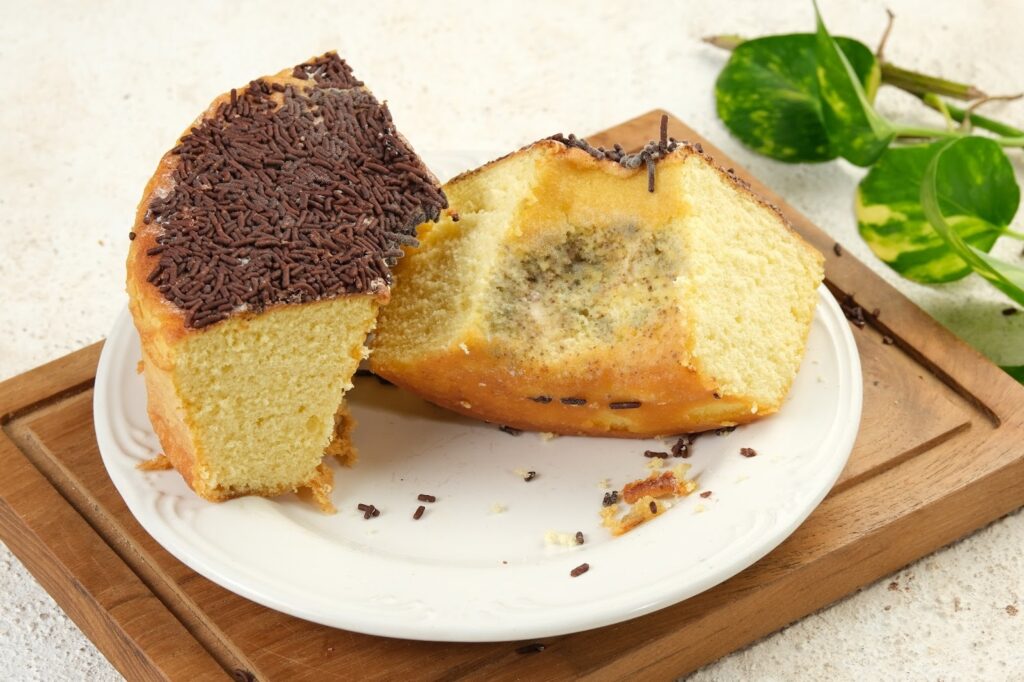
A spoiled cake is something every cake enthusiast has to experience now and then.This is not something you can pop in the microwave, hoping the heat will magically fix. Spoiled cake is done, and it’s important to know when to let it go:
- Spoiled cake will usually have an off-putting smell. Cake should smell sweet and buttery, not tangy or musty. Pay attention to your nose and toss the cake away if you pick up anything weird.
- Even a small speck of mould means the entire cake is no longer safe. Obvious but worth repeating, don’t bother scraping it off because mould is rooted inside the cake too. It may be hard to see mould on some cakes, so pay close attention.
Mould is usually fuzzy and discoloured like a white patch.
- Another thing to watch for is texture. If your cake feels unusually sticky or slimy, especially around the frosting or filling, it’s probably starting to break down. This is more common in cakes with cream cheese, whipped cream or fruit fillings.
- Try to take a look at the colour too. Any strange patches, dullness or an overall “off” look is a major red flag. Cakes should still look appetising even after a few days in the fridge. If it makes you squint, it’s time to throw it in the bin.
- Last but not least, trust your gut. If something about the cake seems off but you’re still tempted to try…dont. “There are plenty of cakes in the fridge or freezer” depending on how you want to look at it.
The Bottom Line
Cakes are not eternal. But you can make them last longer than they should when you follow the right steps. That’s why you need to know how long does a cake last in the fridge and how to store cake the right way.
You should also keep an eye out for any signs that indicate your cake is better off in the bin than your home. With that said, you can always pop by the local bakery to get yourself a new one.
Get in touch to find out more!

